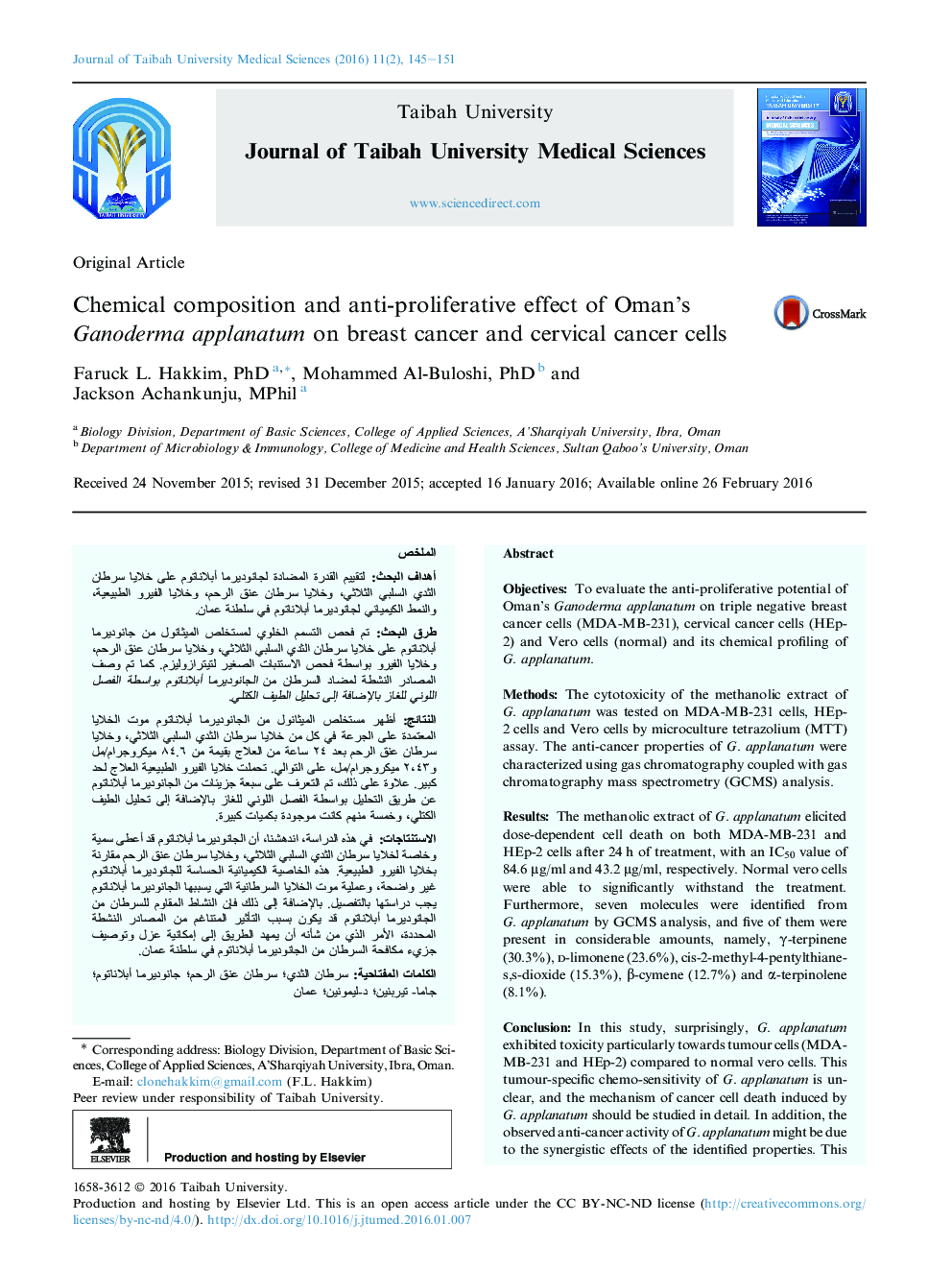| Article ID | Journal | Published Year | Pages | File Type |
|---|---|---|---|---|
| 3484329 | Journal of Taibah University Medical Sciences | 2016 | 7 Pages |
ObjectivesTo evaluate the anti-proliferative potential of Oman's Ganoderma applanatum on triple negative breast cancer cells (MDA-MB-231), cervical cancer cells (HEp-2) and Vero cells (normal) and its chemical profiling of G. applanatum.MethodsThe cytotoxicity of the methanolic extract of G. applanatum was tested on MDA-MB-231 cells, HEp-2 cells and Vero cells by microculture tetrazolium (MTT) assay. The anti-cancer properties of G. applanatum were characterized using gas chromatography coupled with gas chromatography mass spectrometry (GCMS) analysis.ResultsThe methanolic extract of G. applanatum elicited dose-dependent cell death on both MDA-MB-231 and HEp-2 cells after 24 h of treatment, with an IC50 value of 84.6 μg/ml and 43.2 μg/ml, respectively. Normal vero cells were able to significantly withstand the treatment. Furthermore, seven molecules were identified from G. applanatum by GCMS analysis, and five of them were present in considerable amounts, namely, γ-terpinene (30.3%), d-limonene (23.6%), cis-2-methyl-4-pentylthiane-s,s-dioxide (15.3%), β-cymene (12.7%) and α-terpinolene (8.1%).ConclusionIn this study, surprisingly, G. applanatum exhibited toxicity particularly towards tumour cells (MDA-MB-231 and HEp-2) compared to normal vero cells. This tumour-specific chemo-sensitivity of G. applanatum is unclear, and the mechanism of cancer cell death induced by G. applanatum should be studied in detail. In addition, the observed anti-cancer activity of G. applanatum might be due to the synergistic effects of the identified properties. This would pave the way for isolation and characterization of the potential anti-cancer molecule from Oman's G. applanatum.
